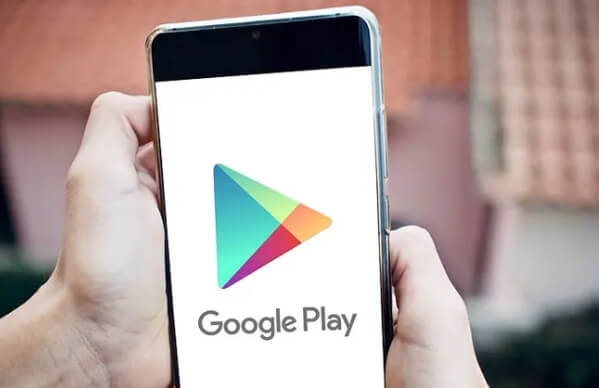Every internet product needs a strong revenue model as its foundation. Designing a revenue model for an internet product isn't entirely without guidelines; many successful products have their own proven revenue models. By summarizing these, we can uncover valuable insights and patterns.
In general, common revenue models include advertising, platform commissions, sales, value-added services, and open API services. These models are well-established from theory to practice. Therefore, when designing a revenue model for an internet product, we don't have to start from scratch; instead, we should first think about the product's characteristics and positioning.

1. Advertising
Advertising revenue is ubiquitous and straightforward. Compared to traditional ads, internet advertising covers a broader audience, comes in various forms (e.g., images, text, videos, multimedia), and allows precise targeted promotions, making it highly valuable and competitive as a comprehensive business model. As a result, many internet products adopt this key revenue stream.
When it comes to internet advertising, there are two primary considerations: the placement of ad slots and the relationship between the ad content and the product. Simply put, it’s about placing the right ad in the right place and in the right format.
Common types of ad placements include:
1.1 Banner Ads
Banner ads, also known as horizontal or full-width ads, typically appear at the top or bottom of the page. They offer a direct way to showcase ads and quickly grab user attention but may partially obscure content and affect user experience.
1.2 Splash Ads
Splash ads appear on the app's launch screen when a user opens the app for the first time. They don’t reappear when the app is resumed from the background. This ad placement makes efficient use of loading time, displaying ads and generating revenue while enriching an otherwise dull loading period without disrupting users. Users generally accept this format as long as the loading process remains smooth and doesn’t exceed 3-5 seconds; otherwise, it could backfire and affect user experience.
1.3 Interstitial Ads
Interstitial ads are pop-ups that appear when a user navigates to a certain feature page, displaying the ad content. This format provides strong visual impact and can be highly effective but may interrupt the user experience (hence, it’s often recommended for use when users first enter the app’s homepage and should be used with caution).
1.4 Message Ads
Message ads deliver promotional information as messages to users. When users click on the message, they’re taken to a detailed product or service page. This format is precise and personalized, enabling different types of users to receive tailored recommendations. For items users have shown interest in but haven’t purchased, price-drop notifications can prompt purchases, though these ads may sometimes be overlooked.
1.5 Video Ads
Video ads are common in video streaming platforms (e.g., Youku, iQiyi). They are embedded within the video content, without adding extra sections. Paid users (subscribers) enjoy ad-free experiences, creating dual revenue streams through subscriptions and video ads.
Common ad types and billing methods include:
CPC (Cost Per Click): Charges based on the number of ad clicks; widely used for keyword ads. Baidu's bidding system exemplifies CPC.
CPM (Cost Per Thousand Impressions): Charges based on ad impressions, regardless of user interaction, common for pop-up ads.
CPA (Cost Per Action): Charges based on ad campaign results, such as completed surveys, registrations, or downloads.
CPS (Cost Per Sales): Charges based on actual sales revenue, with pre-set commission rates, common in game distribution partnerships.
CPT (Cost Per Time): Charges based on ad slot usage time, such as "monthly rates," a straightforward yet effective approach.
CPV (Cost Per Visit): Charges based on the number of times content is played, used widely in rich media ads.
2. Platform Commissions
The commission-based model involves platforms helping merchants (B2B) sell their products in exchange for a fee. This model is prevalent in e-commerce and group-buying platforms.
3. Sales
The sales model is when platforms sell their own products, data, information, or services. Examples include self-operated items on JD.com and Amazon, paid music downloads on Xiami and QQ Music, and paid image and font downloads on sites like Nitu and Foundertype. This model closely ties to the platform's nature.
4. Value-Added Services
Value-added services refer to services that go beyond the standard offering, providing additional features based on customer needs, such as premium access or exclusive privileges. A prime example is QQ, with its virtual items (Q coins), avatars, and various membership levels. The aforementioned streaming services’ ad-free viewing for members is also a classic value-added service.
5. Open API
In the internet era, open APIs involve packaging web services into computer-readable data interfaces for third-party developers. Platforms providing these services are called open platforms.
Examples include Tencent, Amap, and Baidu open platforms, offering payment, map, and other functional interfaces to empower developers’ products and attract more partners, boosting the platform’s growth. The platform charges licensing fees for these services, making it a profitable model.
6. More Possibilities Based on Product Characteristics
A combination of revenue models can be explored for specific scenarios. For instance, integrating a banner ad with a commission-based model for event promotions aligns with user logic: a user clicks on an ad about an event, finds it interesting, and the next step is to buy tickets. This one-stop journey from ad to purchase enhances user experience.
This example shows the flexibility of revenue models and how new ones are continuously developed. The ultimate goal is to support products with a strong monetization strategy.
Using a revenue model mind map helps leverage market-tested experience, allowing for faster and more efficient monetization.







